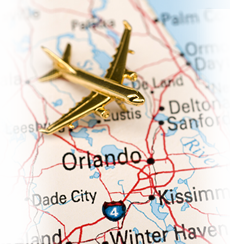June 1st marks the start of the 2014 hurricane season. Before the season begins, please make sure that you are prepared for the possibility of a tropical storm or hurricane. Storm systems can change quickly and unexpectedly, so preparation is the best way to avoid injury or damage to property. Here are a few tips to help you prepare:
- Monitor weather conditions, and follow directions from state and local officials. Get up-to-date advisories on storms impacting Central Florida and your local community at www.FloridaDisaster.Org. For the latest information on weather, including advisories, tracking maps, and satellite and radar images, visit the National Hurricane Center at www.NHC.NOAA.Gov.
- Know your evacuation route, and follow evacuation orders from local officials immediately. Learn more at www.Ready.Gov/Evacuating-Yourself-and-Your-Family.
- Create an emergency plan, and have an emergency contact number for someone out-of-state, who knows where you are in the event of an emergency. Learn more at www.Ready.Gov/Make-a-Plan.
- Know your local emergency contact information. We’ve compiled a list of our local, state, and federal government contacts below, for your reference.
- Build an emergency supply kit, which includes essential items to help you and your family survive for at least 72 hours after a hurricane. Find a checklist in www.Ready.Gov/Build-A-Kit. Your emergency supplies kit should include items such as:
- Water (one gallon of water per-person, per-day, for at least three days, for drinking and sanitation, is recommended) and food (at least a three-day supply of non-perishable food, as well as a can-opener)
- Portable, battery-powered radio or television with extra batteries, flashlight, matches in a waterproof container, signal flare, and fire extinguisher
- First aid kit, first aid manual (available at www.ready.gov), and a supply of prescription medicines
- Extra set of car keys, credit card and cash, as well as personal identification, insurance policy paperwork, and other important family documents
- Map of your area and Family Disaster Plan
- Special items for infants, such as formula and diapers
- Pet food and extra water for your pet
- Dust mask (to help filter contaminated air), plastic sheeting and duct tape to shelter-in-place
- Wet wipes, garbage bags, and plastic ties for personal sanitation
- Talk to your insurance agent about flood insurance, and review your homeowner’s policy. To learn more about your risk and flood insurance, visit www.FloodSmart.Gov.
Emergency Contact Numbers
Números de Emergencia
Orange County, Emergency Management
Condado Orange, Manejo de Emergencias
(407) 836-9140
Osceola County, Emergency Management
Condado Osceola, Manejo de Emergencias
(407) 742-9000
Polk County, Emergency Management
Condado Polk, Manejo de Emergencias
(863) 534-5600
Federal Emergency Management
Administration (FEMA)
Administración Federal para el
Manejo de Emergencias
1-800-621-FEMA (3362)
FEMA, Regional Office
FEMA, Oficina Regional
(770) 220-5200
Florida Division of
Emergency Management
División para el Manejo de
Emergencias de la Florida
(850) 413-9969
American Red Cross, Mid-Florida
Cruz Roja Americana, Mid-Florida
(407) 894-4141




